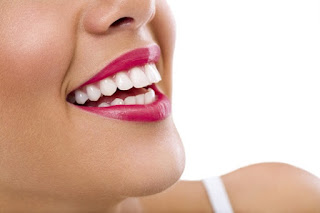Common Misconceptions About Dental Extractions in Dubai
After undergoing a dental extraction, understanding the healing process is vital for a smooth recovery. Whether it’s due to decay, overcrowding, or other dental issues, extractions are a common procedure. Knowing what to expect and how to care for yourself during recovery can make all the difference. A Dental Extractions Clinic Dubai can provide personalized care and guidance throughout your healing journey. This article will explore the stages of healing after a dental extraction and offer practical tips to facilitate recovery.
Understanding the Extraction Procedure:
Before diving into the healing process, it's essential to understand what happens during a dental extraction.
The Extraction Process:
Dental extractions are typically performed in a dental office, often under local anesthesia to ensure comfort. The dentist will carefully loosen the tooth and remove it from its socket. Post-extraction, a blood clot forms in the socket, which is a crucial part of the healing process.
Immediate Aftercare:
Following the extraction, immediate aftercare is crucial. Your dentist at a Dental Extractions Clinic Dubai will provide specific instructions to follow, such as:
- Biting Down on Gauze: You will be given gauze to bite on to help control bleeding. Change the gauze as instructed until bleeding stops.
- Resting: Rest is essential for recovery. Avoid strenuous activities for the first 24 hours to minimize bleeding and promote healing.
The Stages of Healing:
Healing after a dental extraction generally occurs in several stages, each important for successful recovery.
1. The First 24 Hours:
The first 24 hours post-extraction are critical. Here’s what to expect:
- Bleeding: It’s normal to experience some bleeding during this time. If it continues beyond a few hours, contact your dentist.
- Swelling and Discomfort: Swelling and mild discomfort are common. Apply ice packs to your cheek for 15-20 minutes at a time to help reduce swelling.
2. Days 2 to 3:
During this period, the initial healing begins. You may notice the following:
- Reduced Bleeding: Bleeding should subside, and you may notice the formation of a blood clot in the extraction site.
- Pain Management: Over-the-counter pain relievers can be used to manage discomfort. Always follow the dosage instructions provided by your dentist.
3. Days 4 to 7:
By the end of the first week, significant healing has usually occurred.
- Decreased Swelling: Swelling typically decreases, and any bruising may begin to fade.
- Soft Diet: Continue eating soft foods and avoid any hard, crunchy, or spicy items that could irritate the site.
4. Weeks 2 to 4:
As time progresses, the socket will begin to heal more completely.
- Tissue Regeneration: New tissue will start to fill in the socket where the tooth was extracted.
- Returning to Normal: You can gradually reintroduce regular foods into your diet, but be cautious around the extraction site.
5. Long-Term Healing:
Complete healing of the extraction site can take several weeks to months. It’s essential to maintain good oral hygiene during this time.
- Avoiding Dry Socket: One complication to watch for is dry socket, which occurs if the blood clot dislodges. Follow your dentist’s aftercare instructions carefully to prevent this.
Caring for the Extraction Site:
Proper care of the extraction site is essential to ensure effective healing. Here are some key tips:
1. Maintaining Oral Hygiene:
- Gentle Cleaning: You can brush your teeth but be careful to avoid the extraction site for the first few days. After the first 24 hours, you can gently rinse your mouth with warm salt water to help keep the area clean.
- Avoiding Irritants: Steer clear of tobacco products, as they can impede the healing process and increase the risk of complications.
2. Diet Recommendations:
- Soft Foods: For the first few days, stick to soft foods such as yogurt, mashed potatoes, and smoothies. As you heal, gradually reintroduce harder foods but avoid anything that might irritate the area.
- Hydration: Drink plenty of fluids but avoid using straws, as sucking can dislodge the blood clot.
Recognizing Complications:
While most dental extractions heal without issue, being aware of potential complications is essential.
Signs of Complications:
Infection: Watch for signs such as increased pain, swelling, fever, or pus discharge from the extraction site. If you notice any of these symptoms, contact your Dental Extractions Clinic Dubai immediately.
Dry Socket: Symptoms include severe pain a few days after the extraction, a bad taste in your mouth, or visible bone in the socket. If you suspect dry socket, seek treatment from your dentist.
Prolonged Bleeding: If bleeding continues beyond 24 hours, reach out to your dentist for advice.
Follow-Up Appointments:
Follow-up visits to your Dental Extractions Clinic Dubai are crucial for monitoring your recovery. Your dentist will check the extraction site to ensure proper healing and address any concerns you may have.
Importance of Follow-Up
Assessing Healing: Regular check-ups allow your dentist to assess how well your mouth is healing and to identify any potential issues early.
Guidance for Future Care: Your dentist can provide guidance on when to resume normal activities and when it’s safe to return to a regular diet.
Conclusion:
Understanding the healing process after a dental extraction is vital for a successful recovery. By following the care instructions provided by your Dental Extractions Clinic Dubai, you can minimize complications and promote effective healing. Remember to prioritize oral hygiene, maintain a soft diet, and stay vigilant for any signs of complications. With the right care, you can ensure a smooth recovery and restore your oral health. Embrace the healing journey, knowing that each step brings you closer to optimal dental wellness.



Comments
Post a Comment